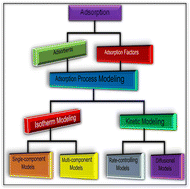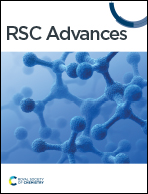Removal of heavy metals from binary and multicomponent adsorption systems using various adsorbents – a systematic review
Abstract
The ecosystem and human health are both significantly affected by the occurrence of potentially harmful heavy metals in the aquatic environment. In general, wastewater comprises an array of heavy metals, and the existence of other competing heavy metal ions might affect the adsorptive elimination of one heavy metal ion. Therefore, to fully comprehend the adsorbent's efficiency and practical applications, the abatement of heavy metals in multicomponent systems is important. In the current study, the multicomponent adsorption of heavy metals from different complex mixtures, such as binary, ternary, quaternary, and quinary solutions, utilizing various adsorbents are reviewed in detail. According to the systematic review, the adsorbents made from locally and naturally occurring materials, such as biomass, feedstocks, and industrial and agricultural waste, are effective and promising in removing heavy metals from complex water systems. The systematic study further discovered that numerous studies evaluate the adsorption characteristics of an adsorbent in a multicomponent system using various important independent adsorption parameters. These independent adsorption parameters include reaction time, solution pH, agitation speed, adsorbent dosage, initial metal ion concentration, ionic strength as well as reaction temperature, which were found to significantly affect the multicomponent sorption of heavy metals. Furthermore, through the application of the multicomponent adsorption isotherms, the competitive heavy metals sorption mechanisms were identified and characterized by three primary kinds of interactive effects including synergism, antagonism, and non-interaction. Despite the enormous amount of research and extensive data on the capability of different adsorbents, several significant drawbacks hinder adsorbents from being used practically and economically to remove heavy metal ions from multicomponent systems. As a result, the current systematic review provides insights and perspectives for further studies through the thorough and reliable analysis of the relevant literature on heavy metals removal from multicomponent systems.

- This article is part of the themed collection: 2023 Reviews in RSC Advances


 Please wait while we load your content...
Please wait while we load your content...